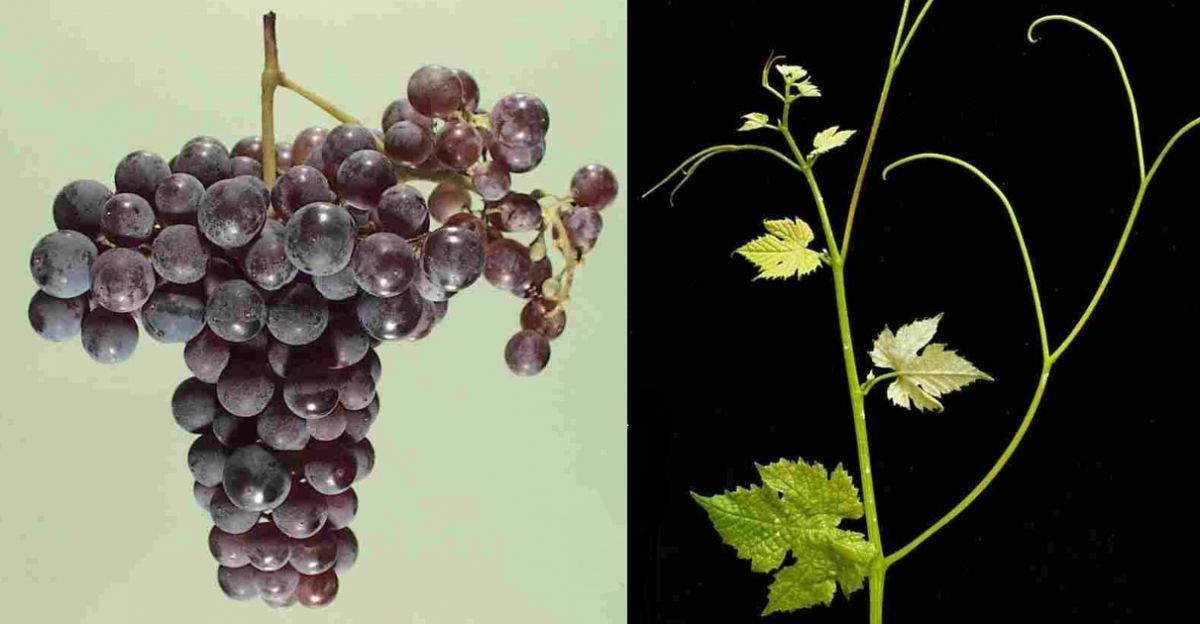This red grape variety comes from France. The name "Little Greenling" refers to the high acidity in the grapes, which are often underripe due to the long ripening period. Synonyms are Bouton, Bouton (Bonton) Blanc, Carmelin, Heran, Herrant, Lambrusquet, Lambrusquet Noir, Petit Verdau, Petit Verdot Nero, Petit Verdot Noir, Plant des Palus, Verdau, Verdot and Verdot Petit. It must not be confused with the Fer (Herrant) varieties or with Gros Verd ot, which was mentioned together in 1736, despite seemingly suggestive synonyms or morphological similarities. The exact parentage of the Petit Verdot variety is unknown; according to DNA analyses, it seems to be descended from wild vines near the Pyrenees.

The late-ripening vine is sensitive to drought but resistant to botrytis due to its thick-skinned berries. It produces colourful, spicy red wines rich in alcohol, tannin and acidity, with aromas of violets and storage potential. Once widespread in Bordeaux, the late ripening of the grape posed a problem, especially in Saint-Émilion and Pomerol, and many wineries abandoned it from the 1960s onwards. Since the end of the 1980s, it has been cultivated again with an upward trend. In total, 870 hectares of vineyards are planted with it in France, about 500 of them in Bordeaux. In the Médoc, it is still one of the classic vines in the Bordeaux blend and a (small) component of great red wines such as Château Latour, Château Margaux and Château Palmer. Other areas under cultivation in Europe are in Italy (296 ha), Spain - where it was introduced in the 1990s by the famous viticultural pioneer Marqués de Griñón (1,804 ha), Portugal (90 ha), Switzerland (2 ha), Turkey (19 ha) and Hungary (4 ha).
In Australia, it was already introduced in 1832 by the viticultural pioneer James Busby (1802-1871). It is grown in the Barossa Valley, Clare Valley, Coonawarra, Langhorne Creek, Margaret River, McLaren Vale, Mudgee, Padthaway and Swan Valley and occupies a total of 1,118 hectares. Other countries include Argentina - where Petit Verdot was confusingly called Fer for a long time (740ha), Brazil (13ha), Chile (863ha), Israel (275ha), Canada (26ha), Myanmar = Burma (2ha), New Zealand (9ha), South Africa mainly in the Paarl and Stellenbosch areas (749ha) and Uruguay (26ha), as well as in the USA (1,219ha) in the states of California, New York, Virginia and Washington. The variety occupied a total of 8,124 hectares of vineyards in 2016. It is thus ranked 86th in the global grape variety ranking (Kym Anderson).
Source: Wine Grapes / J. Robinson, J. Harding, J. Vouillamoz / Penguin Books Ltd. 2012
Images: Ursula Brühl, Doris Schneider, Julius Kühn-Institut (JKI)
Voices of our members

The glossary is a monumental achievement and one of the most important contributions to wine knowledge. Of all the encyclopaedias I use on the subject of wine, it is by far the most important. That was the case ten years ago and it hasn't changed since.
Andreas Essl
Autor, Modena